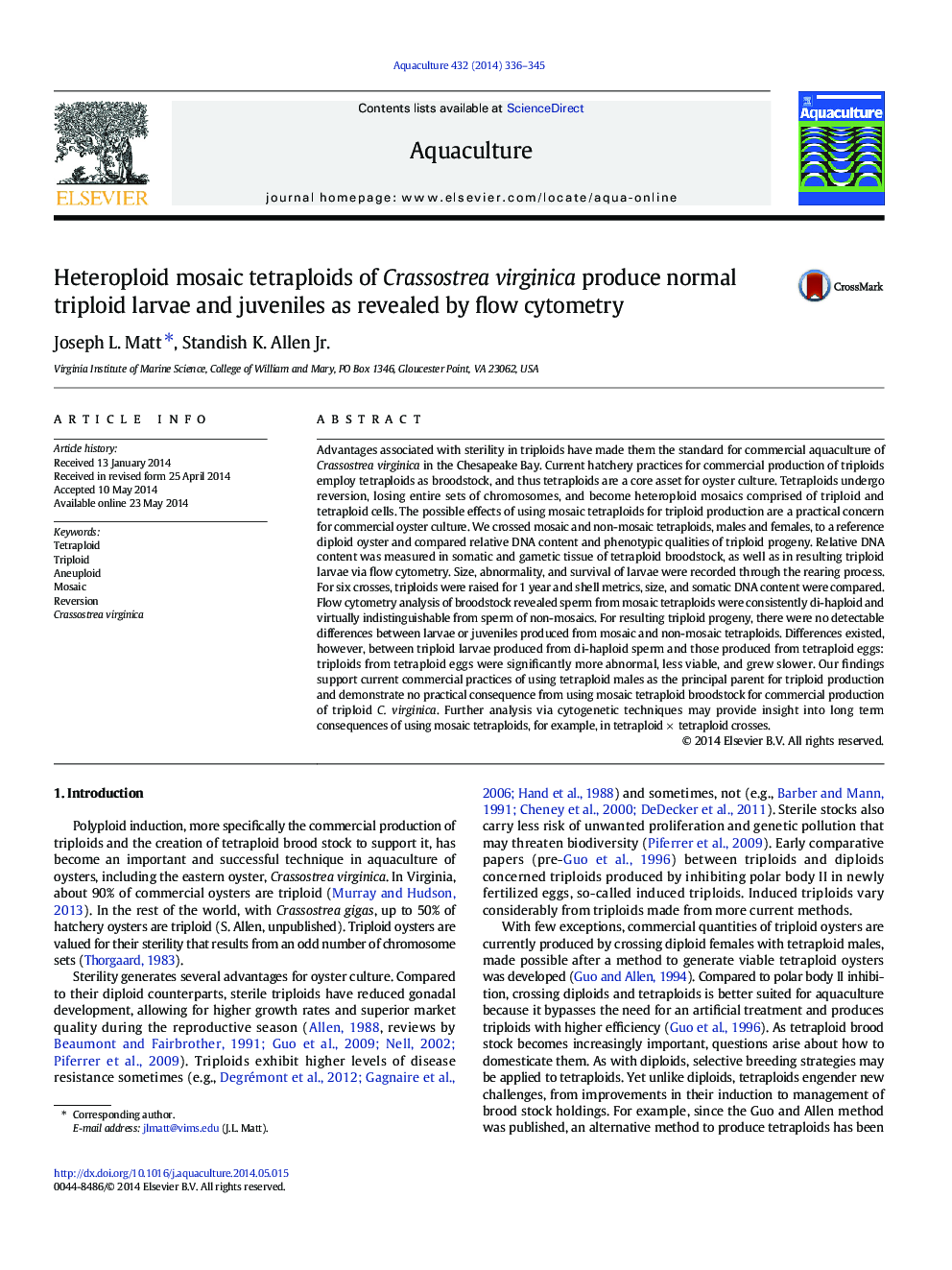| کد مقاله | کد نشریه | سال انتشار | مقاله انگلیسی | نسخه تمام متن |
|---|---|---|---|---|
| 2421807 | 1552855 | 2014 | 10 صفحه PDF | دانلود رایگان |

• We crossed mosaic tetraploids and non-mosaic tetraploids to standard diploids.
• Sperm from mosaic tetraploids and non-mosaic tetraploids were indistinguishable.
• Triploids made by mosaic tetraploids and non-mosaic tetraploids were not different.
• Triploids from tetraploid eggs were less viable than those from tetraploid sperm.
Advantages associated with sterility in triploids have made them the standard for commercial aquaculture of Crassostrea virginica in the Chesapeake Bay. Current hatchery practices for commercial production of triploids employ tetraploids as broodstock, and thus tetraploids are a core asset for oyster culture. Tetraploids undergo reversion, losing entire sets of chromosomes, and become heteroploid mosaics comprised of triploid and tetraploid cells. The possible effects of using mosaic tetraploids for triploid production are a practical concern for commercial oyster culture. We crossed mosaic and non-mosaic tetraploids, males and females, to a reference diploid oyster and compared relative DNA content and phenotypic qualities of triploid progeny. Relative DNA content was measured in somatic and gametic tissue of tetraploid broodstock, as well as in resulting triploid larvae via flow cytometry. Size, abnormality, and survival of larvae were recorded through the rearing process. For six crosses, triploids were raised for 1 year and shell metrics, size, and somatic DNA content were compared. Flow cytometry analysis of broodstock revealed sperm from mosaic tetraploids were consistently di-haploid and virtually indistinguishable from sperm of non-mosaics. For resulting triploid progeny, there were no detectable differences between larvae or juveniles produced from mosaic and non-mosaic tetraploids. Differences existed, however, between triploid larvae produced from di-haploid sperm and those produced from tetraploid eggs: triploids from tetraploid eggs were significantly more abnormal, less viable, and grew slower. Our findings support current commercial practices of using tetraploid males as the principal parent for triploid production and demonstrate no practical consequence from using mosaic tetraploid broodstock for commercial production of triploid C. virginica. Further analysis via cytogenetic techniques may provide insight into long term consequences of using mosaic tetraploids, for example, in tetraploid × tetraploid crosses.
Journal: Aquaculture - Volume 432, 20 August 2014, Pages 336–345